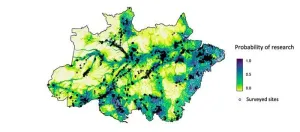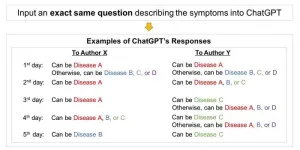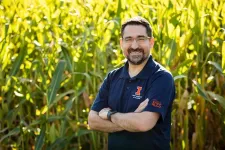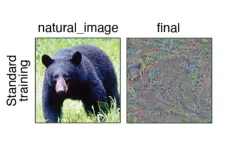(Press-News.org) Many parts of the Brazilian Amazon are neglected in ecological research, for several reasons, according to an article published in the journal Current Biology. Authored by Joice Ferreira of the Federal University of Pará (UFP) and colleagues from many countries who also belong to the Synergize Consortium, the article identifies the areas missing from ecological research and the factors that have determined these gaps, pinpointing opportunities for the planning of new investments in research in the region.
The researchers analyzed data from 7,694 ecological research sites to try to understand how logistics and human influence on the forests could explain the probability of research being done in different parts of the Amazon region. The period analyzed was 2010-20, and the survey covered nine groups of organisms: benthic invertebrates (living on the seabed or in the lowest layers of any water body), heteropterans (true bugs), odonates (dragonflies and damselflies), fish, macrophytes (aquatic plants), birds, woody vegetation, ants, and dung beetles.
“The consortium contacted people who had contributed to databases, standardized inventories and studies involving sampling efforts. Information was thereby compiled on three groups that represent Amazonian biodiversity: vertebrates, invertebrates, and plants in upland forests, flooded forests and aquatic environments – rivers, lakes, etc. This is the first paper published by the group,” said Mario Ribeiro de Moura, a researcher at the State University of Campinas’s Institute of Biology (IB-UNICAMP) in São Paulo, Brazil. He is a co-author of the article and a member of the consortium.
The findings evidenced high susceptibility to climate change by 2050 in 15%-18% of the most neglected areas in the Brazilian Amazon. The least studied areas are also the most threatened in the vicinity of the “deforestation arc”, a swathe of territory extending along the southern, southeastern and eastern borders of Amazonia, mostly in the states of Acre, Amazonas, Maranhão, Mato Grosso, Pará, Rondônia and Tocantins.
The main gaps in Amazonian ecological research were in upland areas. “This was expected and probably reflects the role played by navigable waterways in facilitating access to blackwater and whitewater inundation forest, as well as other aquatic environments,” Moura said.
Not by chance, the least pessimistic scenarios appeared along rivers in northeast Pará and Roraima, southeastern Acre and northern Rondônia. “In these areas, the future impact of climate change will be less severe, and we have more knowledge of the species that live there,” Moura said.
The study was supported by FAPESP via two postdoctoral fellowships in Brazil. One of the fellowships was awarded to Raquel de Carvalho, and the other to Angélica Faria de Resende. Moura was supported by a Young Investigator Grant and a scholarship in Brazil.
Research biases
The scientists mapped the most neglected areas of the Amazon region in terms of ecological research and superimposed on this map the areas most likely to be affected by climate change based on a metric they developed to reflect its intensity. Deforestation and degradation data were taken from a recent study published in Science on the drivers of deforestation in the Amazon. The correlations between datasets showed that ecological research in the Amazon is more frequent in deforested areas than areas where deforestation is predicted in the next three decades.
“Environmental change is happening at a very fast pace, including climate change and landscape transformation. To understand how these changes affect biodiversity, we need to know what was in a given area before they happened. The Amazon is one of the last significantly conserved refuges of tropical biodiversity and essential to an understanding of the isolated effect of climate change and habitat destruction on biodiversity,” Moura said. “The study highlighted the areas at risk of environmental change in the coming years and not yet explored by scientists. Without sufficient ecological research, we won’t be able to know what’s changing and what’s being lost.”
With regard to logistics, accessibility and distance to research facilities were key predictors of the probability of research being done. “Access is a mixed blessing, as evidenced by the deforestation arc. Easy access enables researchers to reach more areas, so part of this immense arc has been thoroughly studied, but it also enables those responsible for deforestation and other malefactors to reach these areas. Little information is available on the threatened areas at the edges of the deforestation arc,” Moura said.
Access, and hence research probability, increased with proximity to transportation and research facilities for all upland organisms and most representatives of wetlands and aquatic habitats. “The length of the dry season determines ease of access by water. In flooded forest areas, the shorter the dry season, the easier it is to gain access by river, and this increases the likelihood of research. In upland areas, more severe dry seasons facilitate overland access, with less mud and inundation,” Moura said.
Forest degradation and land tenure were also moderately effective predictors, albeit with consistent importance, across all organism groups. Both factors affected ecological research in the same direction, with research probability slightly declining in more degraded areas and Indigenous territories, but increasing in conservation units.
In short, less research is done in degraded areas and Indigenous territories, and more in conservation units. “It’s harder to obtain access to Indigenous communities, or there may be a lack of administrative mechanisms that connect researchers with the bodies that regulate such access and with the communities themselves. We need to improve integration between the parties involved, and above all engage local communities in the knowledge creation process. Far more research goes on in conservation units than Indigenous territories, although both are types of protected area,” Moura said.
In Carvalho’s opinion, this is a distribution problem, since Indigenous territories account for some 23% of the total area of the Brazilian Amazon. “At the same time, several Indigenous territories are the best conserved parts of the Amazon biome. It would be very valuable if we could do research there,” she said.
Novel strategies
According to Moura, the Amazon Rainforest is under-represented in global databases used as a source for research on biodiversity. “As noted in the article, we need to integrate the information we have about the Amazon with global databases. The Synergize Consortium has projects that could contribute to global assessments. The information reviewed for this study mostly complies with the requirements of other databases and could be used to improve the representativeness of Amazonian biodiversity in future research on global change. The consortium plans to use this study as a basis for establishing itself as an important collaborative network for other research groups interested in analyzing environmental changes in the Amazon,” he said.
The Synergize Consortium’s principal investigators are Ferreira, who is affiliated with EMBRAPA Amazônia Oriental, a unit of the Brazilian Agricultural Research Corporation (EMBRAPA); and Filipe França, a researcher at the University of Bristol in the United Kingdom. Jos Barlow, a professor at the University of Lancaster, also in the UK, is a co-author of the article and a member of the consortium’s steering committee.
Moura believes the group’s findings can be used to develop novel funding strategies for the Amazon. “Once you’ve identified the gaps, you can target them for investment in conservation and research, or give more weight to research in these areas in future calls for proposals. Public policy and action plans can take these results into consideration, especially as far as biodiversity monitoring and inventorying are concerned,” he said.
About São Paulo Research Foundation (FAPESP)
The São Paulo Research Foundation (FAPESP) is a public institution with the mission of supporting scientific research in all fields of knowledge by awarding scholarships, fellowships and grants to investigators linked with higher education and research institutions in the State of São Paulo, Brazil. FAPESP is aware that the very best research can only be done by working with the best researchers internationally. Therefore, it has established partnerships with funding agencies, higher education, private companies, and research organizations in other countries known for the quality of their research and has been encouraging scientists funded by its grants to further develop their international collaboration. You can learn more about FAPESP at www.fapesp.br/en and visit FAPESP news agency at www.agencia.fapesp.br/en to keep updated with the latest scientific breakthroughs FAPESP helps achieve through its many programs, awards and research centers. You may also subscribe to FAPESP news agency at http://agencia.fapesp.br/subscribe.
END
Study reveals areas of Brazilian Amazon where no ecological research has been done
The findings evidenced high susceptibility to climate change by 2050 in 15%-18% of the areas with the most neglected biodiversity
2023-10-16
ELSE PRESS RELEASES FROM THIS DATE:
New polymer membranes, AI predictions could dramatically reduce energy, water use in oil refining
2023-10-16
A new kind of polymer membrane created by researchers at Georgia Tech could reshape how refineries process crude oil, dramatically reducing the energy and water required while extracting even more useful materials.
The so-called DUCKY polymers — more on the unusual name in a minute — are reported Oct. 16 in Nature Materials. And they’re just the beginning for the team of Georgia Tech chemists, chemical engineers, and materials scientists. They also have created artificial intelligence tools to predict the performance of these kinds of polymer membranes, which could accelerate development of new ones.
The implications are stark: ...
Firearm exposure associated with poorer health in communities around the U.S.
2023-10-16
Gun violence is tied to poverty, unemployment, broken families, disengaged youth and racial segregation, according to a study by the New Jersey Gun Violence Research Center at Rutgers.
Published in the Journal of Urban Health, the study found that people living in disadvantaged communities face gun violence at higher levels that are harmful to the health and well-being of whole neighborhoods.
“Many of America’s most disadvantaged neighborhoods are stuck in a vicious cycle of violence and collateral damage that is almost impossible to escape,” ...
Transforming wastewater into valuable chemicals with sunlight
2023-10-16
Researchers led by Prof. GAO Xiang from the Shenzhen Institute of Advanced Technology (SIAT) of the Chinese Academy of Sciences and Prof. LU Lu from the Harbin Institute of Technology have proposed a novel method to transform wastewater contaminants into valuable chemicals using sunlight, thus paving the way for sustainable and eco-friendly chemical manufacturing.
The study was published in Nature Sustainability on Oct. 16.
Conventional chemical manufacturing relies on energy-intensive processes. Semiconductor biohybrids, integrating efficient light-harvesting materials with superior living cells, have emerged as an exciting advancement ...
Viral persistence and serotonin reduction can cause long COVID symptoms, Penn Medicine research finds
2023-10-16
PHILADELPHIA—Patients with long COVID – the long-term symptoms like brain fog, fatigue, or memory loss in the months or years following COVID-19 – can exhibit a reduction in circulating levels of the neurotransmitter serotonin, according to new research published today in Cell. The study, led by researchers from the Perelman School of Medicine at the University of Pennsylvania, sheds new light on the mechanisms of how persistent inflammation after contracting the SARS-CoV-2 virus can cause long-term neurological symptoms.
According to the CDC, nearly one in five American adults who had COVID-19 experience symptoms of long ...
Can ChatGPT diagnose your condition? Not yet
2023-10-16
A research group led by Tokyo Medical and Dental University (TMDU) finds that when common orthopedic symptoms are given, ChatGPT’s diagnosis and recommendations are inconsistent
Tokyo, Japan – ChatGPT, a sophisticated chatbot driven by artificial intelligence (AI) technology, has been increasingly used in health care contexts, one of which is assisting patients in self-diagnosing before seeking medical help. Although it seems very useful at first glance, AI may cause more harm than good to the patient if it is not accurate in its diagnosis and recommendations. A research team from Japan and ...
Leaders in resuscitation science, education and technology commit to 1 million more lives saved each year by 2030
2023-10-16
DALLAS and STAVANGER, Norway, October 16, 2023 — For nearly 20 years, the American Heart Association® (Association) and Laerdal Medical (Laerdal) have together developed and brought resuscitation education, training and technology to the health care market. The Association and Laerdal will now expand their focus beyond education to creating and nurturing health care quality improvement solutions to impact a community “systems of care” approach and influence more positive patient outcomes. This World Restart a Heart Day, the organizations are furthering their collaborative relationship ...
Management zone maps of little use to corn growers, study finds
2023-10-16
CHAMPAIGN, Ill. — A multiyear analysis tested whether management zone maps based on soil conditions, topography or other landscape features can reliably predict which parts of a cornfield will respond best to higher rates of seeding or nitrogen application. The study found that – contrary to common assumptions – crop-plot responses to the same inputs vary significantly from year to year. The most unpredictable factor – the weather – seemed to have the biggest impact on how the crops responded to these inputs.
The ...
Study: Deep neural networks don’t see the world the way we do
2023-10-16
CAMBRIDGE, MA -- Human sensory systems are very good at recognizing objects that we see or words that we hear, even if the object is upside down or the word is spoken by a voice we’ve never heard.
Computational models known as deep neural networks can be trained to do the same thing, correctly identifying an image of a dog regardless of what color its fur is, or a word regardless of the pitch of the speaker’s voice. However, a new study from MIT neuroscientists has found that these models often also respond the same way to images or words that have no resemblance to the target.
When these neural networks were used to generate an image ...
Moffitt research finds non-small cell lung cancer drug lorlatinib targets additional protein
2023-10-16
TAMPA, Fla. — Targeted cancer drugs are widely used because of their ability to inhibit specific proteins involved in cancer development with fewer side effects compared to chemotherapy drugs. But targeted therapies can often inhibit other unknown proteins. These hidden targets may also contribute to the drug’s anticancer effects and potentially offer a path for the drug to be repurposed for other cancers controlled by the hidden target.
In a new study published in Cell Chemical Biology, Moffitt Cancer Center researchers demonstrate this, showing that the ROS1 inhibitor lorlatinib has activity against an additional protein called PYK2. The team also reveals the mechanisms of ...
Medicaid is a vital lifeline for adults with Down syndrome
2023-10-16
FOR IMMEDIATE RELEASE
Monday October 16, 2023
Contact:
Jillian McKoy, jpmckoy@bu.edu
Michael Saunders, msaunder@bu.edu
##
Life expectancy has increased substantially for people in the United States with Down syndrome, from a median age of 4 years old in the 1950s to 57 years old in 2019. This longer life span increases the need for adequate healthcare into adulthood for this population, the majority of whom are at high ...
LAST 30 PRESS RELEASES:
The Lancet Obstetrics, Gynecology, & Women’s Health: Taking paracetamol during pregnancy does not increase risk of autism, ADHD or intellectual disabilities, confirms new gold-standard evidence review
Taking paracetamol during pregnancy does not increase risk of autism, ADHD or intellectual disabilities
Harm reduction vending machines in New York State expand access to overdose treatment and drug test strips, UB studies confirm
University of Phoenix releases white paper on Credit for Prior Learning as a catalyst for internal mobility and retention
Canada losing track of salmon health as climate and industrial threats mount
Molecular sieve-confined Pt-FeOx catalysts achieve highly efficient reversible hydrogen cycle of methylcyclohexane-toluene
Investment in farm productivity tools key to reducing greenhouse gas
New review highlights electrochemical pathways to recover uranium from wastewater and seawater
Hidden pollutants in shale gas development raise environmental concerns, new review finds
Discarded cigarette butts transformed into high performance energy storage materials
Researchers highlight role of alternative RNA splicing in schizophrenia
NTU Singapore scientists find new way to disarm antibiotic-resistant bacteria and restore healing in chronic wounds
Research suggests nationwide racial bias in media reporting on gun violence
Revealing the cell’s nanocourier at work
Health impacts of nursing home staffing
Public views about opioid overdose and people with opioid use disorder
Age-related changes in sperm DNA may play a role in autism risk
Ambitious model fails to explain near-death experiences, experts say
Multifaceted effects of inward foreign direct investment on new venture creation
Exploring mutations that spontaneously switch on a key brain cell receptor
Two-step genome editing enables the creation of full-length humanized mouse models
Pusan National University researchers develop light-activated tissue adhesive patch for rapid, watertight neurosurgical sealing
Study finds so-called super agers tend to have at least two key genetic advantages
Brain stimulation device cleared for ADHD in the US is overall safe but ineffective
Scientists discover natural ‘brake’ that could stop harmful inflammation
Tougher solid electrolyte advances long-sought lithium metal batteries
Experts provide policy roadmap to reduce dementia risk
New 3D imaging system could address limitations of MRI, CT and ultrasound
First-in-human drug trial lowers high blood fats
Decades of dredging are pushing the Dutch Western Scheldt Estuary beyond its ecological limits
[Press-News.org] Study reveals areas of Brazilian Amazon where no ecological research has been doneThe findings evidenced high susceptibility to climate change by 2050 in 15%-18% of the areas with the most neglected biodiversity






